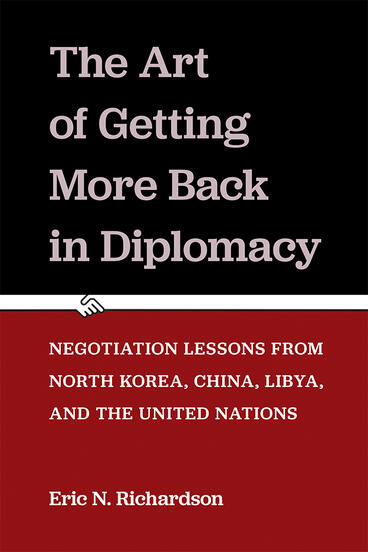The Art of Getting More Back in Diplomacy
Negotiation Lessons from North Korea, China, Libya, and the United Nations
Why boardroom diplomacy fails
Description
In the field of negotiation theory, the Harvard Project’s Getting to Yes and Donald Trump’s The Art of the Deal occupy polar opposition locations on a spectrum considering distributive and integrative negotiation theories. The Art of Getting More Back in Diplomacy offers case studies from international negotiations in which the author participated that can help illustrate the tactics and theories of each type of negotiation and to make students in law, business, and other fields into better negotiators. Among the case studies are lessons drawn from negotiating denuclearization with North Korea, political reconciliation in Libya, human rights improvements in China, Israel-Palestinian peace processes, and UN negotiations over surveillance, privacy, atrocities prevention, LGBT rights, and other fundamental freedoms. By illustrating these lessons, The Art of Getting More Back in Diplomacy strengthens the tools that students and teachers of negotiations should have in their negotiating toolbox. Perhaps most importantly, Richardson provides concrete examples of how a negotiator is likely to Get More Back for their clients if they deploy these tactics, rather than having them used against the negotiator.
Eric N. Richardson is Senior Advisor at the Centre for Humanitarian Dialogue and Lecturer in International Law at University of California-Berkeley
Reviews
“Drawing on his singular background as a policymaker and his keen analytic acumen, Richardson has produced an impressive book offering unique insights into an understudied realm of negotiations and diplomacy. Scholars and practitioners alike will find it a rewarding read.”
- William Inboden, Clements Center for National Security, University of Texas at Austin
—William Inboden, Clements Center for National Security, University of Texas at Austin
“For anyone interested in international human rights and negotiations, this book makes a great contribution. International legal issues seem so vast. Richardson takes on this vastness, distilling the problems of our world into meaningful lessons and couches them in the theories and strategies of diplomacy. It is a fascinating read, with implications extending far beyond the world of international relations.”
—Susan Schechter, UC Berkeley School of Law Field Placement Director and Lecturer-in-Residence
- Susan Schechter

